In Addition
Vol 15 సంచిక 5
September / October 2024
1. Health Article
Take care of Mental Health to embrace joy!
“Fear is the biggest cause of illness…Another method of avoiding illness is to diminish mental worry. Now, I find people are increasing their worries, and getting anxious about things that they do not understand; nor can they correct them or reform them. The radio, the newspaper and other means of communication or information cause so much fear and discontent, that worry and anxiety are increased and the mind of man gets weakened… Transfer the faith that you have in drugs to God; put your trust, not in medicine, but in Madhava. I am astounded at the number of people resorting to tablets and tonics. Resort to prayer, sadhana, japam, and dhyanam. They are the vitamins you need; they will restore you.”…Sathya Sai Baba1
In the previous issue of our Newsletter, we dealt with maintaining brain health; this article will delve into various aspects of mental health.
1. What is Mental health?
Just as physical health is state of our body, mental health is state of our mind, feelings, and emotions. A mentally healthy person will feel, think, and act in ways that help one enjoy life and meet its challenges with 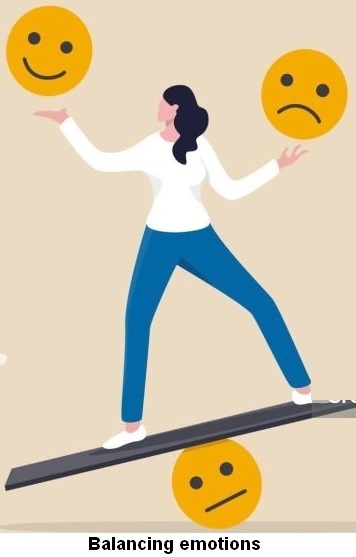 resilience. If you are feeling unhappy, have difficulty thinking clearly, or feeling overwhelmed by a stressful situation, not occasionally, then you are struggling with your mental health. Both physical and mental health have to be maintained with care and attention as they are interdependent; one can influence the other. Having poor mental health does not always mean one has a mental illness or a behavioural health disorder. Similarly, a person with mental illness may struggle and experience tough times but still have periods of good mental health.2,3
resilience. If you are feeling unhappy, have difficulty thinking clearly, or feeling overwhelmed by a stressful situation, not occasionally, then you are struggling with your mental health. Both physical and mental health have to be maintained with care and attention as they are interdependent; one can influence the other. Having poor mental health does not always mean one has a mental illness or a behavioural health disorder. Similarly, a person with mental illness may struggle and experience tough times but still have periods of good mental health.2,3
2. What is Mental illness?
A significant disturbance in a person’s cognition, emotions, and behaviour indicates a mental disorder. Mental illness refers to all diagnosable mental disorders that affect one’s thinking, feeling, mood, action, and ability to interact with others. It is not the same as feeling sad, unhappy, or stressed in difficult situations, which is a temporary phase. In illness, anxiety or distress does not go away, rather it gets worse with time. The affected person would be regularly distressed, his mood and behaviour may be unpredictable, having no clarity to function consistently or control his own life without assistance. There are many types of mental illnesses. As these are not easily understood by people, many patients experience stigma, discrimination, and violation of their human rights.2-5
3. Causes of mental illness
Anyone can develop a mental disorder. Major causes are genes, family history, unresolved traumatic experiences or relationships, history of abuse, death of loved ones, struggle with one’s beliefs or spirituality, financial problems, poverty or barriers to opportunity, loneliness or life in isolation without friends or family, biological factors such as chemical imbalance in the brain, traumatic brain injury, prenatal exposure to viruses or toxic chemicals, use of alcohol or recreational drugs, or serious medical condition like cancer.2,3,6
4. Kinds of mental illness2-14
4.1 Anxiety-disorders: They are characterised by excessive fear, worry, guilt, obsession, or panic about anything even when there is no perceivable danger or emergency. It could be about consistent difficulty in handling simple day-to-day activities of work, money, people, travel, or fear of humiliation or rejection at home, workplace, or in public life, of losing dear ones, or of phobias after a trauma. It can take various forms.
Generalised Anxiety Disorder (GAD) makes one restless, irritable, easily fatigued and complains of aches and pains, and poor sleep. People with panic disorders or neurosis can have unexpected panic attacks with symptoms like pounding heart, sweating, trembling, and chest pain. Social anxiety disorder is 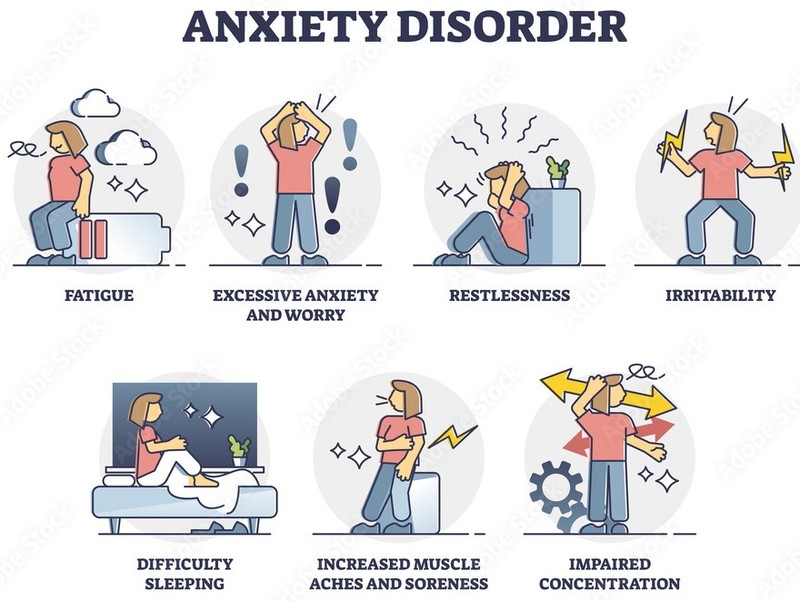 intense fear of being embarrassed or watched and judged negatively by others. Intermittent explosive disorder (IED) means frequent episodes of impulsive anger bouts out of proportion to the event that triggered it.
intense fear of being embarrassed or watched and judged negatively by others. Intermittent explosive disorder (IED) means frequent episodes of impulsive anger bouts out of proportion to the event that triggered it.
Obsessive Compulsive Disorder (OCD): makes a person experience uncontrollable recurring thoughts or engage in repetitive behaviour, eg, aggressive, unpleasant, or forbidden thoughts towards oneself or others; compulsive washing of hands out of fear of contamination, rigidly wanting everything around in perfect order.
Post-Traumatic Stress Disorder (PTSD): It develops after exposure to an extremely threatening or horrific event or series of events. The patient experiences for several weeks the trauma as flashbacks or has nightmares and starts avoiding anything that reminds him of it, and keeps perceiving an immediate threat.
Claustrophobia is intense fear of enclosed or crowded spaces causing sweating and chills, increased heart rate, dizziness or light headedness, 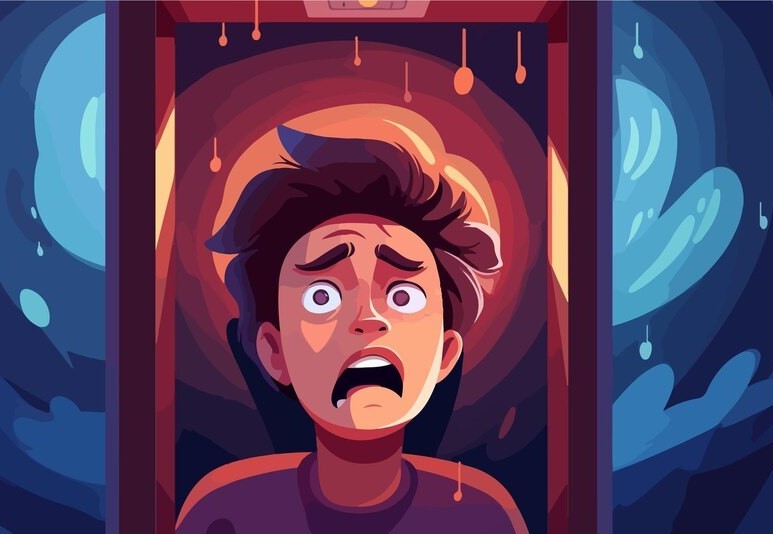 choking sensation, hot flashes, and confusion. May range from mild nervousness to a panic attack. Triggers could be a childhood experience of being trapped or kept in a confined place, being abused or bullied, or separated from parents or loved ones in crowded places. Other phobias can be fear of heights, flying, animals, insects, injections, and so on; in agoraphobia, the patient fears going out and in severe cases becomes housebound.
choking sensation, hot flashes, and confusion. May range from mild nervousness to a panic attack. Triggers could be a childhood experience of being trapped or kept in a confined place, being abused or bullied, or separated from parents or loved ones in crowded places. Other phobias can be fear of heights, flying, animals, insects, injections, and so on; in agoraphobia, the patient fears going out and in severe cases becomes housebound.
4.2 Depression: It is different from usual mood fluctuations. In depression, one feels sad, irritable, empty, and loses interest in activities for most of the day, nearly every day, for at least two weeks. Also, other symptoms like poor concentration, excessive guilt or low self-esteem, hopelessness about the future, thoughts of dying or suicide, disrupted sleep, changes in appetite or weight, and feeling especially tired or low in energy.
4.3 Bipolar-disorder/Manic Depressive Disorder makes the person experience alternating depressive episodes as in depression with periods of manic symptoms; the latter include euphoria or irritability, increased 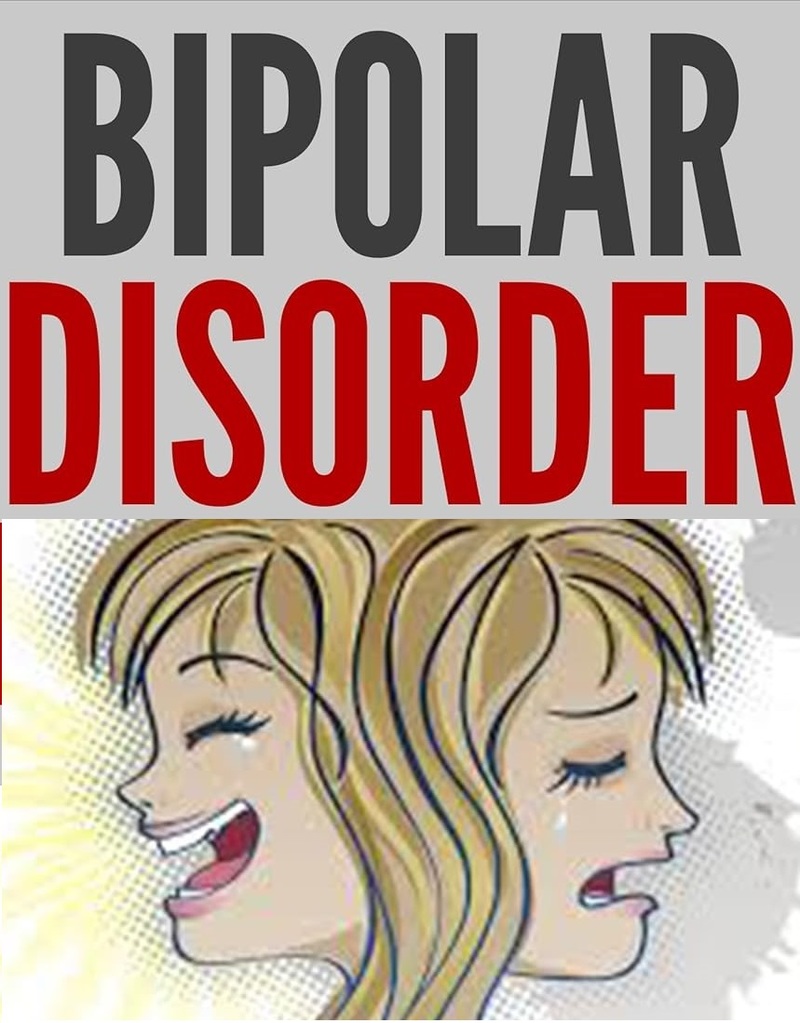 activity or energy, increased talkativeness, racing thoughts, increased self-esteem, decreased need for sleep, distractibility, and impulsive reckless behaviour. Such patients are at an increased risk of suicide.
activity or energy, increased talkativeness, racing thoughts, increased self-esteem, decreased need for sleep, distractibility, and impulsive reckless behaviour. Such patients are at an increased risk of suicide.
4.4 Schizophrenia is a psychotic disorder in which reality perception gets altered. Its symptoms include persistent delusions, hallucinations, 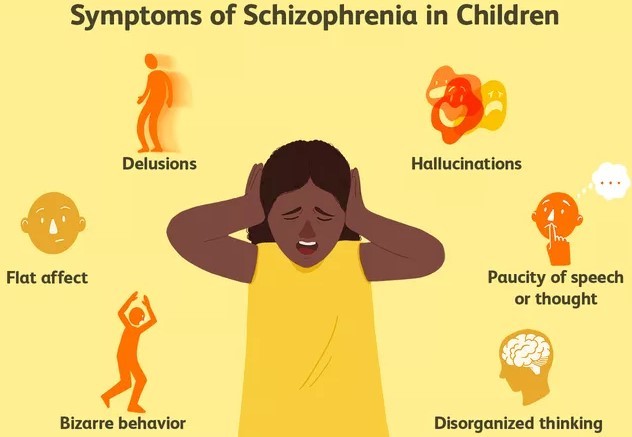 disorganised thinking, highly disorganised behaviour, and extreme agitation, with persistent difficulty in cognitive functioning. In Psychosis too the patient loses touch with reality, the most common symptom being paranoia ie, severe suspicion about intentions of others.
disorganised thinking, highly disorganised behaviour, and extreme agitation, with persistent difficulty in cognitive functioning. In Psychosis too the patient loses touch with reality, the most common symptom being paranoia ie, severe suspicion about intentions of others.
4.5 Attention Deficit Hyperactivity Disorder (ADHD): one of the most common childhood neurodevelopmental disorder, it is marked by an ongoing 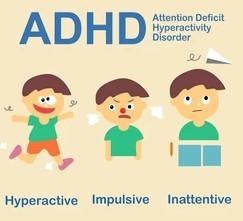 pattern of persistent inattention, and/or hyperactivity, and impulsivity. It interferes with the functioning and development of the child and can continue through adolescence and adulthood.
pattern of persistent inattention, and/or hyperactivity, and impulsivity. It interferes with the functioning and development of the child and can continue through adolescence and adulthood.
4.6 Eating-disorder is an unhealthy relationship with food, weight, and one’s appearance. When it takes 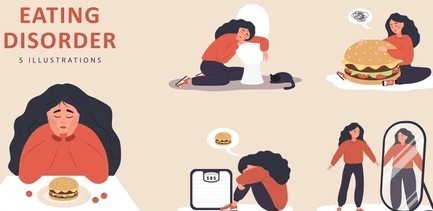 a serious form, it may lead to binge eating - compulsive eating of large amount in a short period of time followed by guilt, bulimia nervosa - eating large amounts over a short period of time and purging, or anorexia nervosa - drastically restricting food with obsessive desire to lose weight.
a serious form, it may lead to binge eating - compulsive eating of large amount in a short period of time followed by guilt, bulimia nervosa - eating large amounts over a short period of time and purging, or anorexia nervosa - drastically restricting food with obsessive desire to lose weight.
4.7 Substance-use disorder: It is an overpowering desire culminating in physical and psychological dependence on alcohol, smoke, other inhalants, drugs, caffeine, etc despite negative consequences. When severe, it becomes an addiction leading to increased tolerance to the substance and withdrawal symptoms if it is not available.
5. Early warning signals of mental illness
Some mental illnesses like bipolar disorder and schizophrenia rarely appear out of the blue. They give warning signals in the initial stages in the form of changes in the behaviour pattern of the patient. Often family members, friends, colleagues, or neighbours can recognise some oddness in the behaviour like dramatic mood swings, social withdrawal or loss of interest in activities or hobbies previously enjoyed, deterioration in work performance, disconnect with oneself and one’s surroundings, illogical thinking, nervousness, hallucinations, and suspiciousness of others, and suicidal thoughts or that of harming others. Particularly, in case of children, problems in concentration or sitting still, excessive worry or anxiety such as fear of going to bed, nightmares, frequent temper tantrums, disobedience or aggression, and hyperactive behaviour are noticeable.15
When the illness is mild it may interfere with life in a limited way; observe the symptoms and their progress. If symptoms persist or do not resolve on their own, patient should be encouraged to visit a health care professional to receive supportive counselling, and be monitored closely in case intensive care is needed. When attended to, mental health conditions can improve and one can even recover fully.15
6. Tips for Mental health16-18
- Self-care is vital to prevent mental illness. Apart from a balanced diet, exercise, hydration, adequate sleep and relaxation, practise gratitude for what you have and lead a balanced life. Pray for yourself and
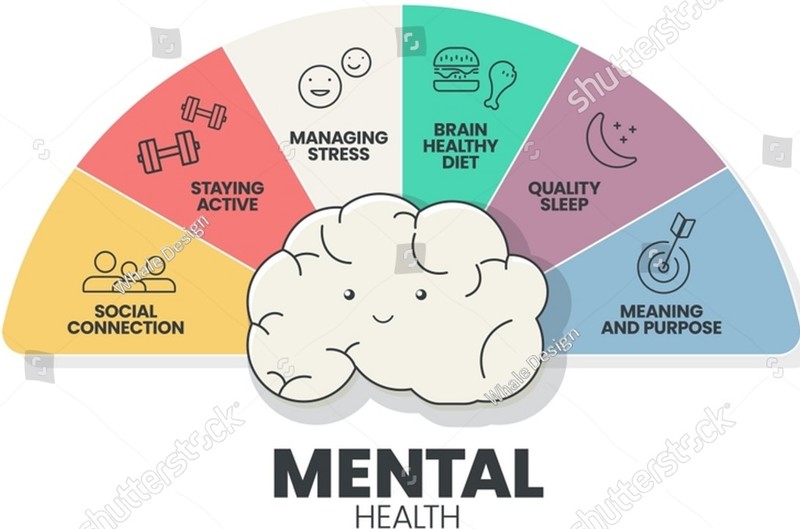
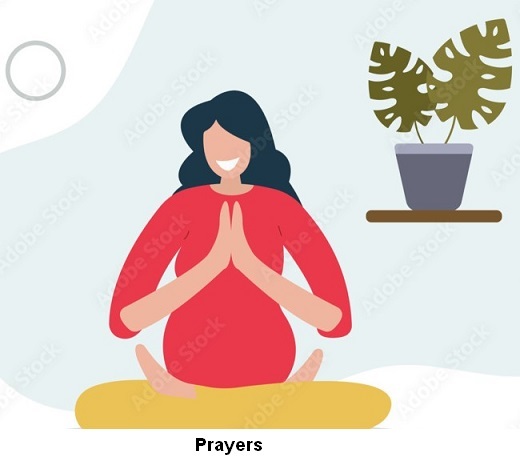 others, meditate and stay connected with your inner deeper self; this will strengthen your faith in self and simultaneously root out negativities in and around you.
others, meditate and stay connected with your inner deeper self; this will strengthen your faith in self and simultaneously root out negativities in and around you. - Heed early symptoms of change in mental health. Note if there are special triggers or family history or if frequency, duration, and intensity of episodes increases, then seek timely professional help for a proper treatment.
- Have a compassionate approach towards self and other patients; it is nothing to be ashamed of as it’s like any other disease that afflicts
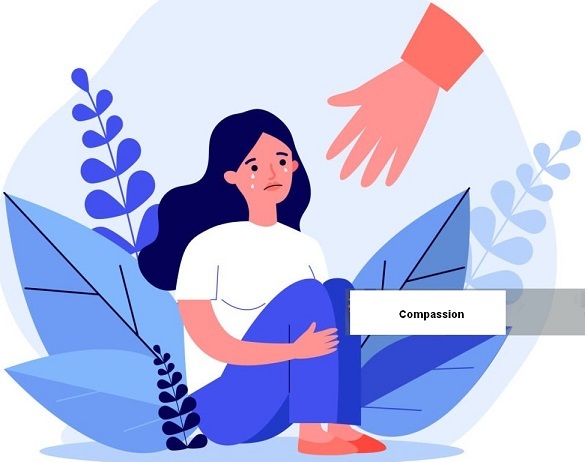 3the body.
3the body. - Connect with and share your problems and apprehensions with your well-wishers and spend time with loved ones. Self-help and support are crucial for coping and recovery.
- Take up activities that give you joy, learn and practise relaxation techniques, music, or any art form, be with Nature, be open minded to receive new experiences, and feel oneness and happiness in others’ happiness.
References and Links
- Sathya Sai Speaks, Divine Discourse, 26 Sept 1965, “Well or Ill”, SSS chapter 38, vol 5: https://sssbpt.info/ssspeaks/volume05/sss05-38.pdf
- Mental health: https://helpstartshere.gov.bc.ca/blog/difference-between-mental-health-and-mental-illness
- Mental health disorders: https://my.clevelandclinic.org/health/diseases/22295-mental-health-disorders
- https://www.who.int/news-room/fact-sheets/detail/mental-disorders
- https://www.psychiatry.org/patients-families/what-is-mental-illness
- Mental illness: https://medlineplus.gov/mentaldisorders.html
- Anxiety disorders: https://www.nimh.nih.gov/health/topics/anxiety-disorders#
- IED: https://my.clevelandclinic.org/health/diseases/17786-intermittent-explosive-disorder
- OCD: https://www.nimh.nih.gov/health/topics/obsessive-compulsive-disorder-ocd#
- Psychosis: https://my.clevelandclinic.org/health/symptoms/paranoia
- ADHD: https://my.clevelandclinic.org/health/diseases/4784-attention-deficithyperactivity-disorder-adhd
- https://www.nimh.nih.gov/health/topics/attention-deficit-hyperactivity-disorder-adhd
- Eating disorders: https://my.clevelandclinic.org/health/diseases/4152-eating-disorders
- Substance use Disorder/addictions: https://my.clevelandclinic.org/health/diseases/16652-drug-addiction-substance-use-disorder-sud
- First signs of illness: https://www.psychiatry.org/patients-families/warning-signs-of-mental-illness
- Taking Care of mental health: https://www.nimh.nih.gov/health/topics/caring-for-your-mental-health
- https://www.mentalhealth.org.uk/explore-mental-health/publications/our-best-mental-health-tips
- https://www.helpguide.org/mental-health/wellbeing/building-better-mental-health
2. Monkeypox (Mpox): Combos suggested
It is a viral illness, first identified in monkeys in 1958, it spreads between humans and animals. Mpox spreads through direct contact with infectious skin or lesions, including face-to-face, skin-to-skin, mouth-to-mouth, and mouth-to-skin contact. It can also spread through respiratory droplets or contaminated materials like sheets or clothes. Common symptoms include a skin rash or mucosal lesions, fever, headache, muscle aches, back pain, and swollen lymph nodes. The World Health Organization has declared mpox a global public health emergency for the second time in two years, following an outbreak of the viral infection in Democratic Republic of Congo that has spread to neighbouring countries. There are currently no mechanisms in place to stop imported cases of mpox happening in other countries. The following remedies are recommended both for treatment and prevention with the proviso that practitioners should stress upon the patients to strictly adhere to the protocol and guidelines issued by WHO and their local health authority.
For 108CC box users: CC9.4 Children’s diseases + CC21.2 Skin infections
For SRHVP users: NM60 Herpes + NM81 Glandular Fever + NM98 Shingles + NM100 Skin-F + SM27 Infection + SM41 Uplift
3. Virtual SVP follow-up course, 27-28 July 2024
Four enthusiastic SVPs03599, 11604, 11624, 11634 of May 2023 batch were joined by several other SVPs who wanted to refresh their knowledge, at this course carefully structured by the two senior Teachers10375 &11422. The main focus of the course was broadcasting and miasms. Examples were cited to convey how powerful can broadcasting be to give relief from stress within a few minutes; it can prevent surgery, impart Divine protection, remove negative entities, and be a life saver when a patient is in ICU. Nevertheless, it was emphasized that it should be resorted to only when essential, since giving physical remedy is very important in order that a patient takes responsibility for himself. The participants enjoyed listening to the experiences of the founders. Hem Aggarwal shared how years back, with Swami’s blessings she experimented potentizing sun rays for a patient having skin rash due to sun allergy, and complete cure was witnessed. Dr Aggarwal advised how to treat wisely when both symptoms and the root cause are known. Ideally, especially while using SRHVP, symptoms should be treated first to give quick relief and then root cause should be addressed in order to prevent strong pullout which may put a patient off vibrionics if not treated carefully.

4. Camps & Clinics
Several new camps and clinics came up in the months of July and August. We specially appreciate the efforts of practitioners from the southern states AP & Telangana, where during the last two months, three such centres have been inaugurated.
1. Rama Mandiram, Desapatrunipalem, Visakhapatnam 7 July 2024 at 4.30pm
The clinic was inaugurated with the efforts of Practitioner 18009 in association with committee members of Rama Mandiram. VT 11567 gave an orientation talk about Sai Vibrionics to an audience of 25-30 persons from surrounding villages, committee members of the mandir and office bearers of the Sai Samithi. VP 11650 also addressed the gathering and answered their questions. One patient related his own positive experience of vibrionics remedy. Bottles of IB remedy were distributed amongst the audience. The clinic will be held every 2nd Saturday from 6 to 8 pm.
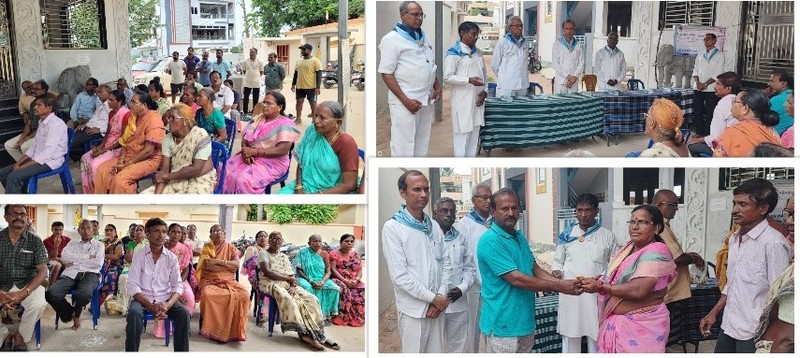
2. Sivaji Nagar, near Kurmanepalem, Visakhapatnam 7 July 2024 at 6pm
In association with Sivaji Nagar Resident’s Welfare Association, VP 11654 organised this wellness clinic and gave a welcome address to 20-25 people from the colony and surrounding area and office bearers of the Ukkunagaram Sai Samithi. After lighting the lamp VT 11567 made a power point presentation and cleared the doubts of the audience. Very useful and inspiring inputs were given by Practitioners 11650 & 11648. Confidence of the audience in the efficacy of Sai Vibrionics was strengthened by personal experiences shared by five patients. One patient was able to avoid knee surgery altogether and another, suffering from rheumatoid arthritis was now less dependent on steroid for pain relief. Bottles of IB were distributed to the audience. The clinic will be held every 4th Friday from 5.30 to 7.30 pm.
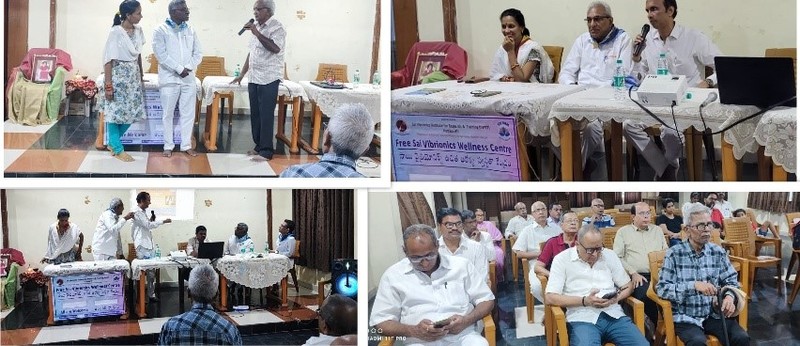
3. Sri Sathya Sai Seva Samithi, KPHB, Hyderabad 15 Aug 2024
The program started with prayers and bhajans. The convener of the Samithi gave inaugural address, introducing two vibrionics practitioners and advising the devotees to avail of this therapy as it is totally harmless (no chemicals) and without 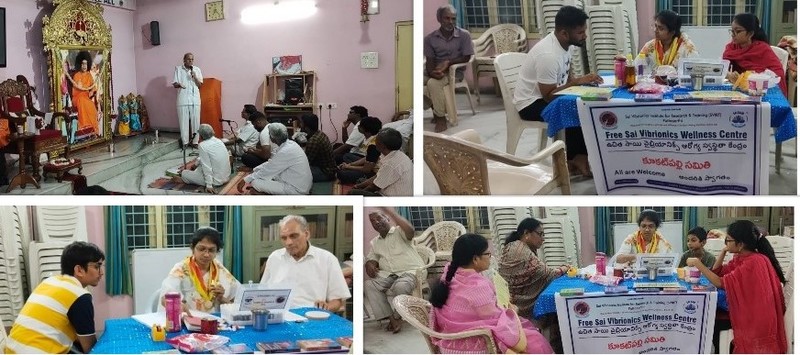 any side effects. Practitioner 11587 gave information on how this healing system started and its headquarters, Immunity Booster, and precautions to be taken during treatment. He also answered questions raised by the devotees. Subsequently some patients narrated their positive experiences with vibrionics. Eight patients were given remedies in addition to 10 bottles of IB and 11 for prevention of dengue fever. So great was the interest that the session continued till 10 pm and the devotees patiently waited to avail of the treatment. Practitioner 11656. will run the centre every 1st Thursday.
any side effects. Practitioner 11587 gave information on how this healing system started and its headquarters, Immunity Booster, and precautions to be taken during treatment. He also answered questions raised by the devotees. Subsequently some patients narrated their positive experiences with vibrionics. Eight patients were given remedies in addition to 10 bottles of IB and 11 for prevention of dengue fever. So great was the interest that the session continued till 10 pm and the devotees patiently waited to avail of the treatment. Practitioner 11656. will run the centre every 1st Thursday.
4. Prematharu tree plantation & Vibrionics for Plants, July 2024
Seventeen practitioners from 5 states of India, namely Maharashtra, Delhi NCR, UP, AP & TS, and Rajasthan planted many new trees and shrubs, at 11 different venues which included parks, schools, villages, homes, and a university campus. For all new and existing plants, numbering 1582 CC1.2 Plant tonic was sprayed. Wherever feasible, local residents including children took part.
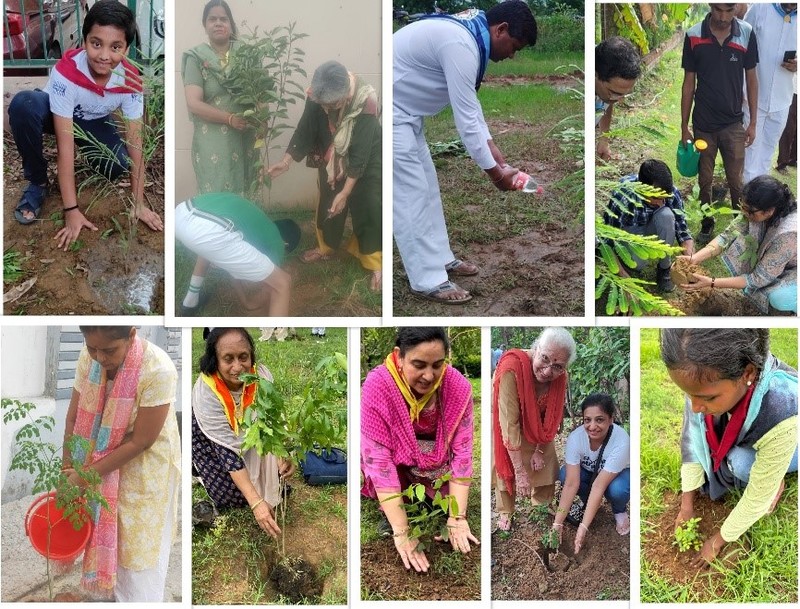
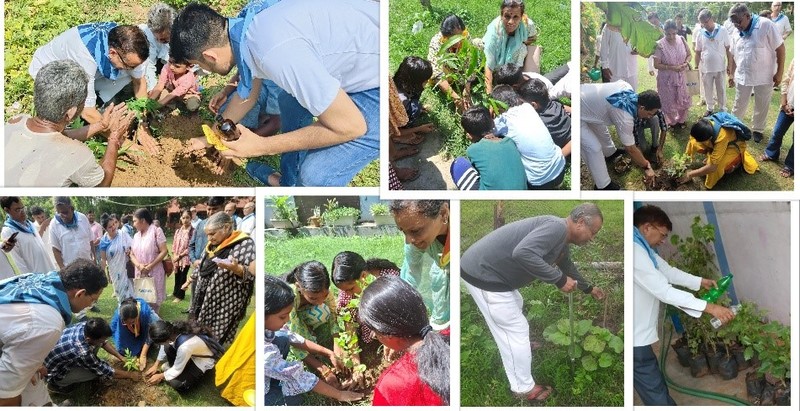
5. Sai Baba Bala Mandir Srirangapatnam, Karnataka – Clinic held remotely (refer Profile 1)
Practitioner 11646…India came up with a unique idea on how to fulfil his potential patient requirement for admission to AVP course and later, successfully treated all the patients at this orphanage, despite not physically meeting them even once!
The practitioner, who lives in Pune, approached the trustee of this orphanage housing 30 children and he was happy to provide him with a list of 26 resident orphans Once he qualified as a practitioner, he undertook the project of treating all the patients, with the support of his mentor and senior practitioners, despite residing over 900 km away. He first set up a video call in which he interacted with each patient individually and recorded their symptoms and ailments. Language was no bar, the patients spoke a different language and the trustee acted as their interpreter. Problems from stammering, acne, cracked feet, mouth sores, dandruff to malnutrition etc. He recorded all the details in an excel sheet along with remedies to be administered (both orally and for external application) and their dosage. In addition, he decided to monitor the children’s weight and haemoglobin level for the duration of the treatment. He prepared the remedies, carefully packed them and couriered them to the orphanage. On receipt of the remedies, he conducted another video call with the patients to explain how these were to be administered, their dosage and precautions to be observed.
Over the course of an entire year, the practitioner meticulously followed up with the patients via video calls at regular intervals and recorded their progress and changes in their symptoms. The orphanage trustee & caretaker confirmed that all the children were symptom-free and there was a marked improvement in their overall wellbeing. Wherever possible, he sent ‘Before and After treatment’ pictures to the practitioner. The practitioner suggested that an alumnus from the orphanage should learn Sai Vibrionics in order for the ashram to become self-sufficient.
After reading of this inspiring project, no practitioner should complain of not being able to find enough patients!
5. Anecdotes
1. From the Diary of Dr Jit K Aggarwal: how fast vibrionics can work!
A young woman walked into the ashram clinic one evening. She had sleepless (2 to 3 hours max) nights for over 15 years, maybe getting a good night sleep no more than once a week. She was given SM8 Insomnia with advice to take a pill every night half an hour before her bedtime, and report after a week. As it was already late in the evening the first dose was given there and then. Next morning there was a knock on the door and there stood the patient delighted to convey that she had sound sleep all night. Being otherwise busy, Dr Aggarwal reminded her to visit on the designated day along with the remedy bottle. So, the patient came after a week and the bottle of pills was as full as it was given! When asked why she had not taken the remedy, she simply said she did not feel the need as she had slept like a baby the whole week. Though she was advised to take the pills for a few more days, just in case she needed them, she returned the bottle, even more confident than the practitioner that she would not need it anymore. It indeed turned out that she slept every single night before she left the ashram!
2. Vibrionics goes hand in hand with home remedy
A 26-year-old female cook had been suffering from leucorrhoea, excessive white vaginal discharge for six months; this became continuous for the past three months. The practitioner11658...India gave CC8.4 Ovaries & Uterus + CC8.5 Vagina & Cervix + CC10.1 Emergencies + CC15.1 Mental & Emotional tonic + CC21.7 Fungus...6TD but this gave only marginal relief in two weeks. She enhanced the above by adding CC2.3 Tumours & Growths + CC3.7 Circulation and advised supplementing it with a daily decoction of guava leaves. In two days, there was 80% relief and she no longer needed sanitary pads. Two days later, the patient excitedly reported complete relief. Impressed by the astonishing results, she recommended vibrionics to others who have since started taking the treatment.
